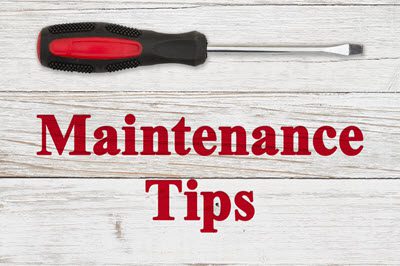 In maintenance management, maximizing the efficiency of maintenance management software is essential for enhancing operational performance and ensuring asset reliability. Here are expert strategies to help you achieve optimal performance with your maintenance management software.
In maintenance management, maximizing the efficiency of maintenance management software is essential for enhancing operational performance and ensuring asset reliability. Here are expert strategies to help you achieve optimal performance with your maintenance management software.
Establish Clear Objectives
To effectively integrate maintenance management software, it’s crucial to distinctly outline its purpose and goals in alignment with the organization’s needs and priorities.
The primary aim is to establish measurable objectives, which could include minimizing downtime, prolonging asset lifespan, or streamlining maintenance operations to enhance efficiency. These objectives serve as benchmarks for evaluating the software’s effectiveness and ensuring it meets the organization’s overarching goals.
Align Software Features with Objectives
It’s essential to ensure that the features of the software, such as work order management, preventive maintenance scheduling, and inventory tracking, are directly aligned with your defined objectives.
To achieve this alignment, prioritize functionalities that specifically address your organization’s pain points and contribute effectively to achieving your maintenance goals. This ensures that the software not only meets your immediate needs but also supports your broader maintenance objectives in a targeted and efficient manner.
Customization and Configuration
Customizing fields, forms, and reports within the software is crucial to ensure they align with your organization’s unique workflows.
Tailoring the software configuration to match your specific requirements enhances usability and efficiency within your maintenance processes. This ensures that the software seamlessly integrates into your existing workflows, maximizing its effectiveness and utility for your team.
Regular Data Maintenance
To uphold data integrity, it’s essential to consistently review and update asset information, maintenance schedules, and work orders within the system.
By eliminating duplicate entries and rectifying inaccurate data, errors are prevented, and system performance is optimized. This ensures reliable decision-making based on accurate and up-to-date information, fostering efficiency and effectiveness in maintenance operations.
Employee Training and Engagement
Enhance user experience by investing in continuous support and resources to help users navigate the software efficiently.
Offer easily accessible help guides, tutorials, and responsive customer support to empower users and enable them to maximize the software’s capabilities. This dedication to ongoing assistance cultivates user confidence and expertise, resulting in streamlined operations and enhanced results.
Utilize Mobile Capabilities
Empower technicians with the ability to access work orders and update statuses in real-time using mobile devices, facilitating seamless communication.
Enhance responsiveness and minimize downtime by utilizing mobile capabilities to streamline maintenance tasks in the field, ensuring swift action and efficient resolution of issues.
Implement Preventive Maintenance
Leverage the software’s functionalities to efficiently schedule and monitor preventive maintenance tasks.
Take a proactive approach to equipment maintenance to reduce downtime, prolong asset lifespan, and maximize the utilization of maintenance resources, thereby enhancing operational efficiency.
Define Key Performance Indicators (KPIs)
Identify pertinent Key Performance Indicators (KPIs), such as Mean Time Between Failures (MTBF) or Overall Equipment Effectiveness (OEE), that align closely with your maintenance objectives.
Establishing transparent metrics enables the measurement of performance and facilitates tracking progress toward achieving maintenance goals effectively.
Performance Monitoring and Analysis
Consistently monitor Key Performance Indicators (KPIs) within the software to assess its efficacy in meeting maintenance objectives.
Analyze metrics such as Mean Time Between Failures (MTBF), Mean Time to Repair (MTTR), and Overall Equipment Effectiveness (OEE) to pinpoint areas for enhancement and make informed decisions grounded in data-driven insights.
Continuous Improvement
Cultivate a culture of continuous improvement by actively seeking feedback from users regarding software usability and functionality.
Implement updates and enhancements guided by user input and evolving business requirements to maintain ongoing alignment with organizational objectives.
Utilize Vendor Support
Utilize vendor support services for technical assistance and optimization of maintenance management software usage.
Leverage vendor expertise to effectively address issues and maximize the software’s potential, thereby enhancing maintenance operations.
Vendor Security Considerations: Safeguarding Your Data
When choosing a vendor, prioritize those who demonstrate a strong understanding of cybersecurity and prioritize data security. Ensure that the vendor’s approach aligns with your organization’s standards and regulations to safeguard sensitive information.
In the vendor selection process, it’s critical to prioritize cybersecurity and data protection measures. Look for vendors who demonstrate a robust understanding of cybersecurity principles and prioritize the safeguarding of sensitive information.
Implementing Continuous Improvement Initiatives
Leverage insights gained from analyzing maintenance data to identify areas for enhancement within your organization’s maintenance processes. Implementing continuous improvement initiatives allows for the refinement of workflows, optimal resource allocation, and the enhancement of overall operational efficiency.
Synergistic Strategies for Continuous Improvement in Maintenance Management
Conclusion
Optimizing maintenance management software like eWorkOrders is vital for operational excellence and asset reliability. By aligning objectives, customizing features, ensuring data accuracy, providing training, utilizing mobile capabilities, implementing preventive maintenance, defining KPIs, monitoring performance, fostering continuous improvement, and leveraging vendor support effectively, organizations can enhance efficiency and achieve long-term success in maintenance management.